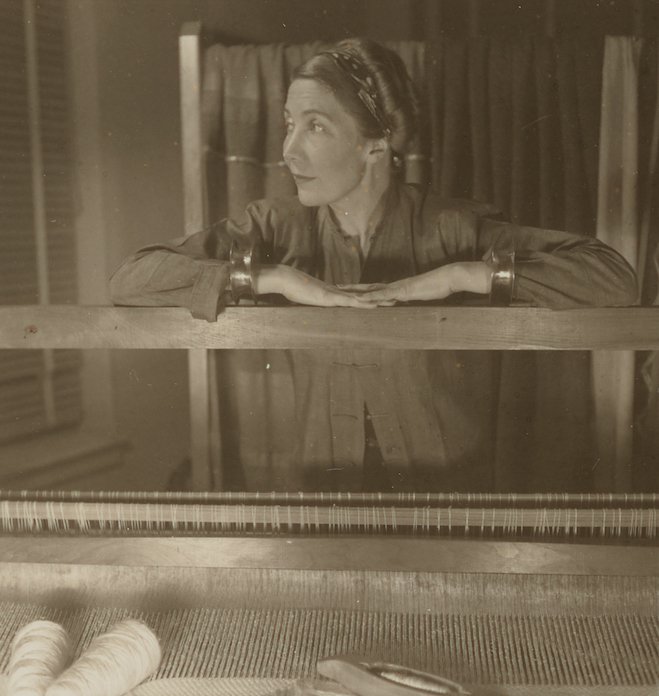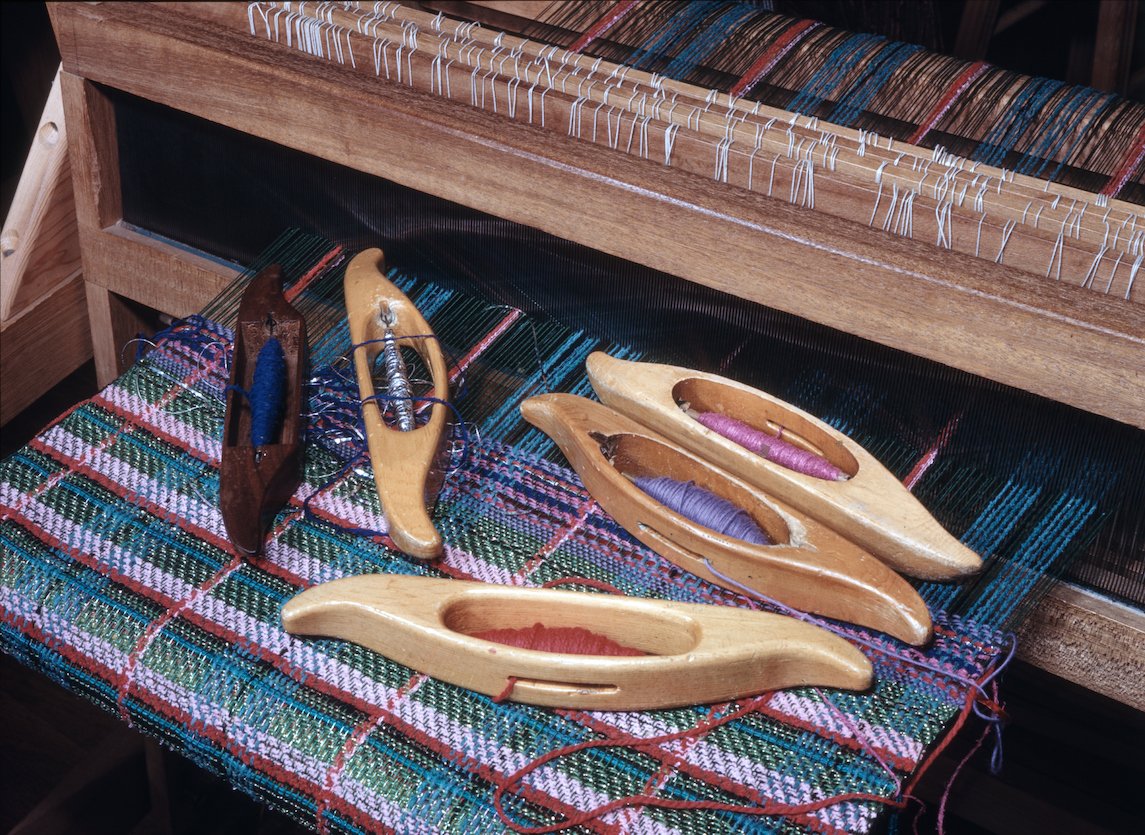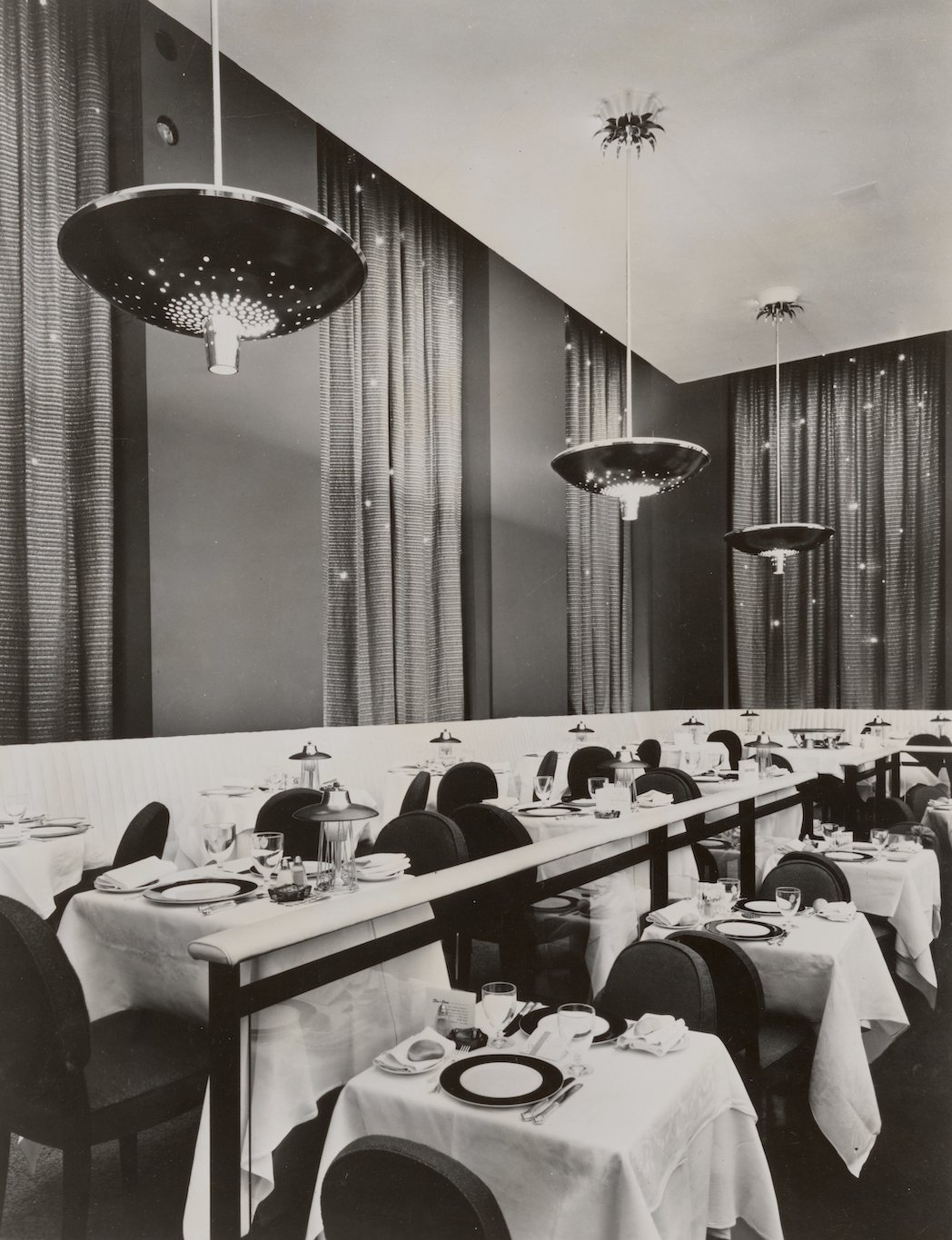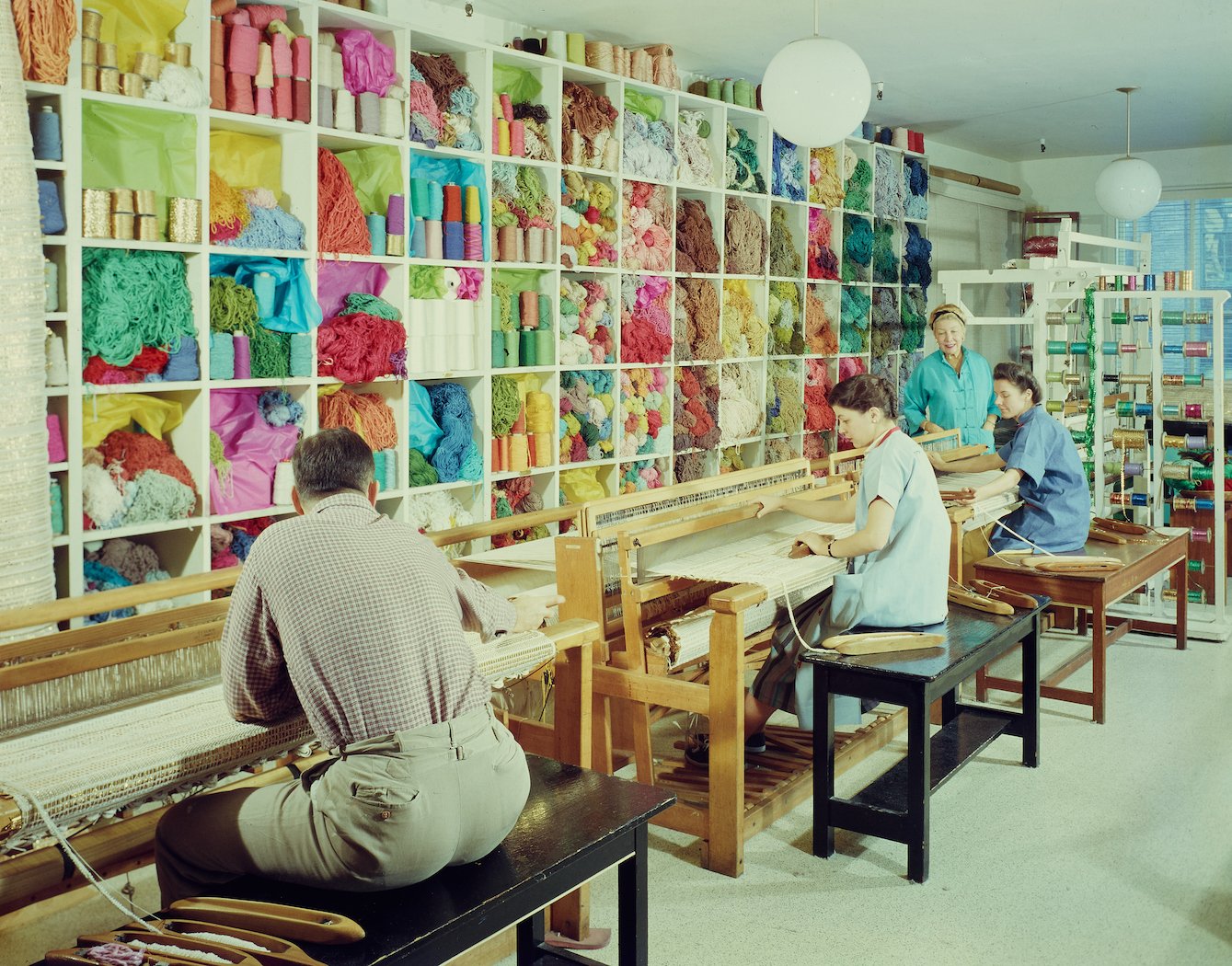
“When people don’t feel my fabrics, I am hurt,” Dorothy Liebes wrote in 1943. The designer and weaver was speaking literally, lauding the virtues of texture, touch, and tactility. But you could easily take her words metaphorically, as a comment on how she wanted her textiles to reach people on a personal level, connecting with their lives and emotions. Of design, she once said, “Our own responses to it spring from a mixture of biological urges, sensory and individual impulses.”
These are sentiments we take for granted today. We think of our surroundings as inextricably intertwined with our well-being, and of our aesthetic choices as an expression of who we are. But Liebes emerged at a time when functional modernism ruled: A few decades prior, Le Corbusier had described a home in entirely functional terms, as “a machine for living in”; all around her, buildings in the new International Style—edifices of steel, concrete, and glass—were springing up. The Californian designer wasn’t the only one to push back against it, but a new book, A Dark, A Light, A Bright: The Designs of Dorothy Liebes (Yale University Press in association with Cooper Hewitt, Smithsonian Design Museum) argues that Liebes was a central part of a movement that strived to bring comfort and humanity back into architecture.
Her fans ranged from architect Frank Lloyd Wright to actor Joan Crawford. In 1945, House Beautiful magazine called her the “greatest weaver alive today.” To wealthy clients across the country and then further afield, she offered the “Liebes look:” luxurious colorful and textural handmade fabrics, often incorporating metallic threads. She used textiles not just as adornment but as an architectural device, breaking up spaces and playing with lightin domestic interiors as well as in high-profile public settings, such as the United Nations headquarters in New York, the San Francisco Stock Exchange, and a series of glamorous restaurants and nightclubs. The fashion world embraced her, too,as her opulent textiles proved ideal for clothes, wraps, handbags, and hats. In 1959, Vogue referred to her as “the hand-loomed look’s ardent, articulate exponent.” Today her designs sit in museums across America, and the Smithsonian holds thousands of documents and photographs in her archive.
Despite this roster of achievements, Liebes’s fame hasn’t lasted. In her foreword to the book, Maria Nicanor, director of the Cooper Hewitt, Smithsonian Design Museum—which is staging an exhibition of the same name through February 4, 2024—admits to having first come across her as recently as 2009. “Liebes’s role in modern design in the United States, from the 1930s and until her death in 1972, was monumental, and yet, her story hasn’t been fully told,” she writes. Alexa Griffith Winton, the museum’s manager of content and interpretation—who edited the book and organized the show, with associate curator and acting head of textiles Susan Brown—expresses a similar sentiment in her introduction: “How can it be that such a famous and influential figure is virtually absent from history books?”
The question is not fully answered—nor is it entirely valid, which we’ll get to in a moment—but the monograph makes a compelling case for why Liebes should be reconsidered. A Dark, A Light, A Bright positions the weaver not only as a tastemaker, but as a pioneer. She was, it claims, a creative soul and entrepreneur whose interests and methods were ahead of her time. She valued accessibility and sustainability, an experimental approach to materials, the seamless blending of craft and technology, an interest in the people and processes behind a product, and a collaborative and international spirit. Through her determination to elevate weaving to the status afforded to the male-dominated disciplines of architecture and industrial design, she challenged the dogmas of purist modernism in a manner that feels entirely fitting to the social, environmental, and cultural concerns of today.

To illustrate these points, Liebes’s weavings appear glorious and vivid throughout. The text itself is a tapestry of interwoven themes: Rigorously researched yet enthusiastic reflections on her impact on fashion, interiors, other designers, and her collaborators are interspersed with focused essays on her use of design elements such as color, texture, glitter, and unexpected natural and synthetic materials. Through this warp and weft, the authors present a view of Liebes’s rich and varied career, and of her enduring significance.
Reading about her accomplishments, one does wonder about the claim that she has been absent from history books: How many unknown artists have an extensive archive at one of the world’s most significant museums, a popular “look” named after them, and decades worth of mentions in the press? By its very nature this is a question it’s impossible to answer empirically—there are, no doubt, countless others (particularly women of color and other marginalized people) who are entirely missing from the records and who will continue to remain unknown, with no chance of their work being revisited. The authors might have made a more persuasive case if they had framed Liebes as underappreciated in comparison to contemporary female designers and highlighted how much sooner others gained the serious attention of design institutions.
Nonetheless, her life story is an interesting read, suggesting a keen and determined focus on her goals from early on. Liebes was born Dorothy Wright in Santa Rosa, California, in 1897. She didn’t attend a well-known modernist design academy like her contemporaries, such as Anni Albers and Marianne Strengell—Liebes studied art education and applied arts—but she demonstrated an instinctive entrepreneurial spirit, seeking out practical opportunities to learn to weave, dye, and design textiles along the way. She also found ways to bolster her academic knowledge, enlisting scholars at institutions including New York University, the Metropolitan Museum of Art, and the Brooklyn Museum to teach her Persian textile history, fine art, and more.
Her first husband, Leon Liebes, did not support her pursuing a professional career in design, and they separated in 1930. It was around then that architect Timothy Pflueger gave her a landmark commission to devise a color scheme and weave curtains for the San Francisco Stock Exchange. Liebes set up her first studio in San Francisco that year, putting together a team of weavers that would go on to establish her reputation as an innovator. She called this place an “idea factory”—a name that aligned her with notions of science and business, rather than cozy domesticity. Her appointment as director of the Decorative Arts Pavilion at the city’s 1939 Golden Gate International Exposition, where she brought together a group of craftspeople to demonstrate their work, was another formative moment that set the designer up with the national and international contacts she needed to flourish.

For a long period, she existed primarily in the realm of luxury. The shimmering delicacy of her custom handwoven fabrics made them suitable for homes that could afford domestic help—though Liebes used these opportunities to experiment, reshaping space with fabrics and blinds, and introducing unusual materials such as reeds, bamboo, grasses, and acrylics alongside her signature metallic fibers and synthetics, such as lurex.
Over time, though, Liebes grew conscious of the accessibility of her work, and became committed to creating “better and better for less and less.” Her ease with media—sharpened by countless interviews for TV, radio, and magazines—signaled that her influence had already extended beyond the schemes she created for individual homes. So she took advantage of power looms and made alliances with big fiber manufacturers, such as the Dobeckmum Company and DuPont, to upscale and expand her practice. As a consultant, she advised fabric companies to improve the look and feel of their machine-made ranges. She also increased the popularity of washable, durable wallpaper collections and of factory-made rugs, which people began to hang on walls as more affordable alternatives to artwork. Through such efforts, Liebes made cutting-edge style available to consumers without the budgets for tailor-made pieces.
Meanwhile, her workshop was an incubator for new talent. By mentoring a younger generation, she encouraged a growing interest in weaving. Liebes’s collaborative approach extended beyond the studio: She saw textiles as an international language, traveling widely—in Japan and India, in particular—to forge connections and to advise governments and businesses on using craft and weaving for economic development.

What the book leaves largely unexplained is how Liebes’s career progressed with such leaps and bounds, with seemingly few barriers. Despite her talent and determination, it would have been an extraordinary thing for a woman in that era to succeed with such ease. So it would have been enlightening to know some of the challenges she encountered along the way, and how she learned how to overcome them and make the connections she needed. The smoothness of her path, as presented by the editors, is hard to believe.
A modest allusion to difficulty lies in the mention that Liebes’s first husband “forbade” her from selling her work professionally—she flourished only after their split. The simple, and perhaps uninteresting, answer is that she faced the barriers one might expect of a professional woman of the time:that she got by through a mix of talent, luck, and privilege. The fact that Liebes has been somewhat forgotten is probably because, like so many creative women—especially those working in fields associated with domesticity—her name was buried as a secondary footnote under the famous men who she collaborated with. In that context, her absence from contemporary design discourse is also unsurprising. It is efforts like this, through exhibitions and books, that one hopes will elevate them to their proper place, just as Anni Albers, Magdalena Abakanowicz, and Faith Ringgold have seen recent reappraisals in institutional contexts.
Perhaps, too, these things come in cycles. Liebes’s work resonated at a time when people were yearning for an antidote to the aesthetics orthodoxies of the time, and today it is finding relevance once again as we seek new, innovative, and collaborative solutions to our present concerns and become excited by new ways of thinking. Liebes herself articulated these shifting ideals well when she said, in 1944, “Once upon a time we were confined to just animal or vegetable materials—grasses, flax, cotton, wool, and, loveliest of all, silk. But we have learned that this is a great, wide, beautiful and resourceful world. We have also opened our eyes and imagination with new awareness.” Liebes did exactly that—her legacy a handy reminder that, at a time when positive change is frequently embroiled in contestation and debate, opportunities for innovation have always existed and been there for our taking.
The book A Dark, A Light, A Bright will be the focus of the September 23 meeting of the New York Architecture + Design Book Club, a quarterly book subscription and event series co-organized by Untapped and the Brooklyn bookshop Head Hi. The book’s editors, along with architect Juan Jofre Lora, will lead the program’s interactive discussion. Find out more and RSVP on the book club’s website.